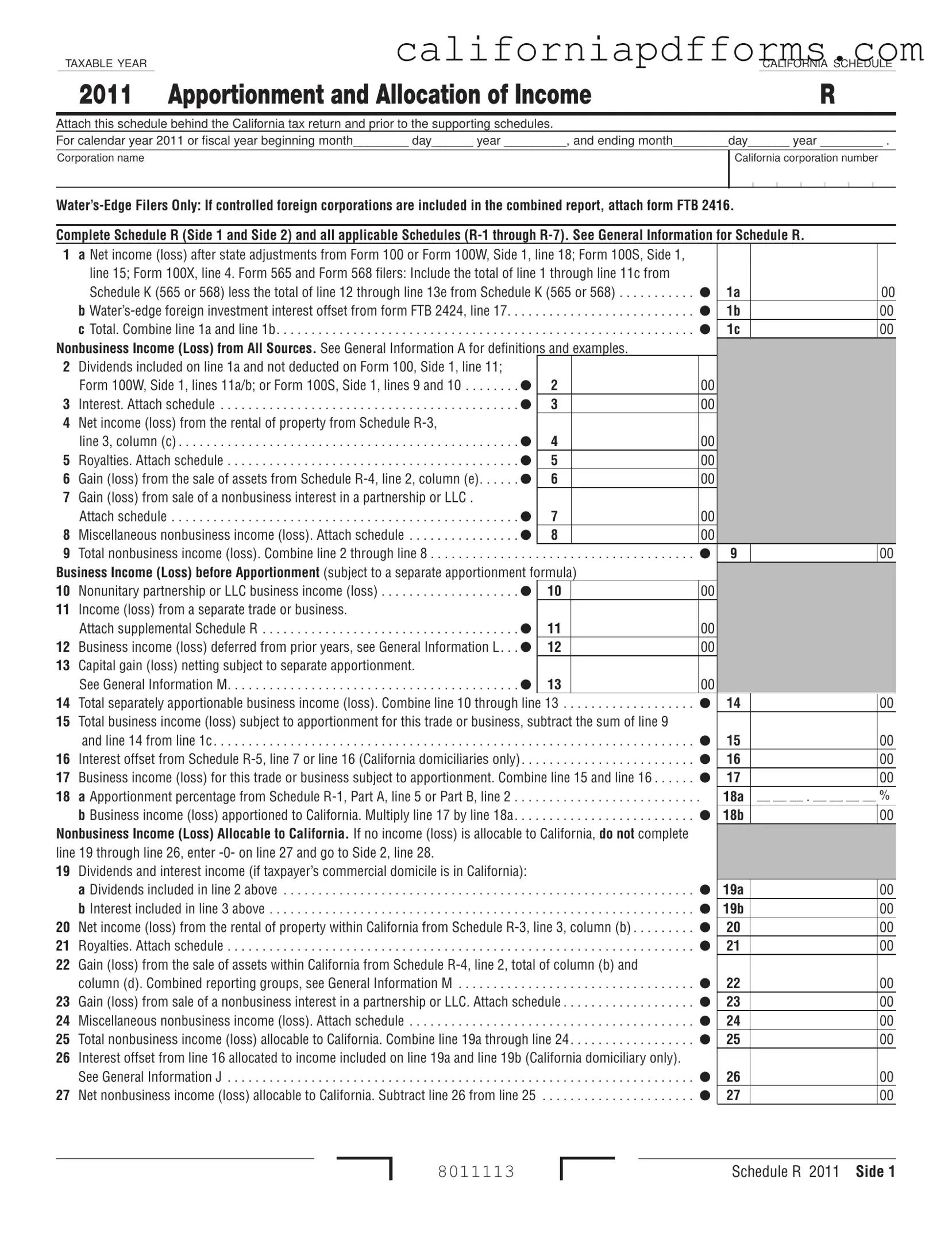The California Schedule R form is used to report the apportionment and allocation of income for corporations doing business in California. It helps determine how much of a corporation's income is subject to California tax based on its business activities within the state.
Who needs to file Schedule R?
Corporations that have income from business activities in California must file Schedule R. This includes corporations that are part of a combined reporting group and those that elect to use the water's-edge method. If a corporation has controlled foreign corporations included in its combined report, it must also attach form FTB 2416.
To complete Schedule R, corporations need to provide:
-
Net income or loss after state adjustments from the relevant tax form (Form 100, 100W, or 100S).
-
Details on nonbusiness income and losses, including dividends, interest, rental income, and gains or losses from asset sales.
-
Business income or loss before apportionment, including income from partnerships or LLCs.
-
Apportionment percentage calculated using either the standard three-factor formula or the single-sales factor formula.
What is the apportionment percentage?
The apportionment percentage determines the portion of a corporation's income that is taxable in California. It is calculated based on the corporation's property, payroll, and sales within California compared to its total property, payroll, and sales. Corporations can choose between a standard three-factor formula or a single-sales factor formula for this calculation.
What types of income should be reported on Schedule R?
Schedule R requires reporting both business and nonbusiness income. Business income includes income from regular operations and activities, while nonbusiness income includes dividends, interest, rental income, and gains from the sale of nonbusiness assets. Each type of income must be detailed separately to ensure accurate apportionment.
How do I report nonbusiness income allocable to California?
To report nonbusiness income allocable to California, fill out the relevant lines on Schedule R that pertain to dividends, interest, rental income, and gains from sales of assets located in California. If no income is allocable, enter -0- on the designated line and proceed to the next section.
What happens if I do not file Schedule R?
Failure to file Schedule R when required may result in penalties and interest on any unpaid taxes. The California Franchise Tax Board may also estimate your tax liability, which could lead to a higher tax bill than if you had accurately reported your income.
Where should I attach Schedule R when filing my tax return?
Schedule R should be attached behind the main California tax return (Form 100, 100W, or 100S) and before any supporting schedules. Ensure that all relevant information is completed accurately to avoid delays in processing your return.
